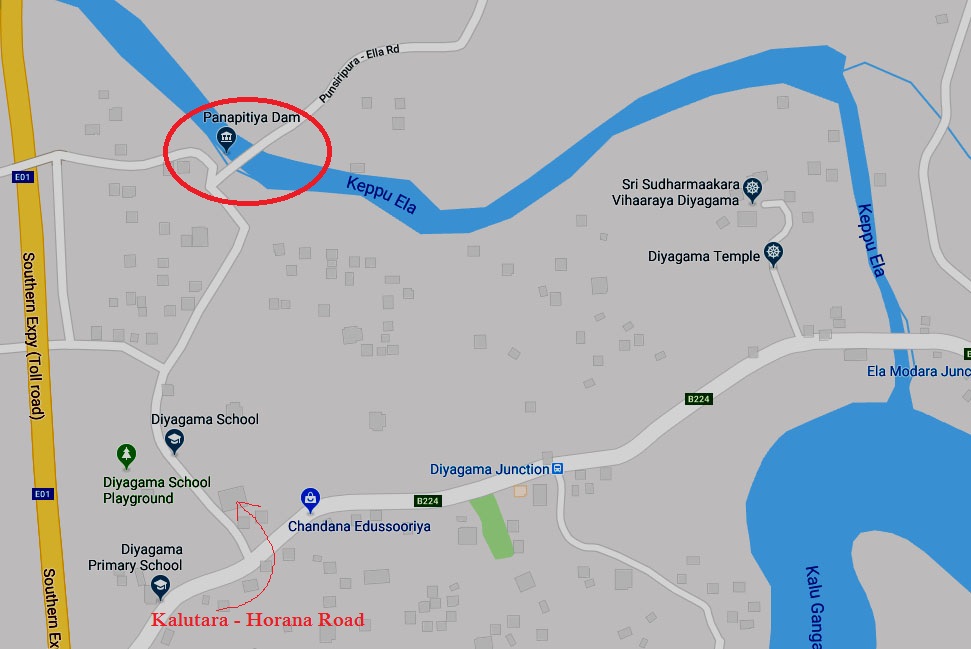PANAPITIYA BUND THAT PROTECTS PANADURA FROM FLOODS
Dutch came to Ceylon from Holland, a country currently know as the Netherlands. Nehterlands is famous for its canals, dams and irrigation systems. It is a known fact that they have built many canal routes during their rule in Ceylon from 1658 to 1796. Some of these canals might be those existed that were reconstructed by them. However, it is evident that Dutch rulers developed many of such waterways. History of “Kapoo Ela (Canal)”, which connects Bolgoda natural reservoir to Kalu Ganga goes back to Dutch Era.

Kapoo Ela begins from Elamodara at Galpatha on the road between Horana and Kalutara. That was an artificial canal route used widely in the past for transportation back and forth from Ratnapura through Kalu Ganga (River) and Kapoo Ela to Moratuwa. During early part of 20th century, with the introduction of Lorries, tiring transportation by these old Paruwa boats were curtailed.
However, the aged community says that the water flowed through this canal inundated certain areas of Moronthuduwa and Panadura. That is why, a bund was built across Kaapoo Ela, through which the narrow water path was made with stop gates. That mechanism can control the water flow through Kapoo Ela.
This attempt to avoid flooding is regarded as Bolgoda project. Although the main dam is located at Dodammulla, Diyagama, it is famous as Panapitiya Bund. There was a fear that this Dam would be damaged by the spills of Kalu Ganga in 2017. If such disaster occurred, Panadura would be inundated. But the majority of the people in the area has not seen the Panapitiya bund so far.
This can be found when take a turn to the left from Diyagama Junction on Kalutara – Horana main road and proceed approximately another 1km ahead of Diyagam Maha Vidyalaya to Didammulla Village. This is the video recorded while our visit to the location.




Comments
Post a Comment
මාතෘකාවට අදාළ නැති හා වෛරී අදහස් ඉවත් කිරීමට ඉඩ ඇති බව කරුණාවෙන් සලකන්න.